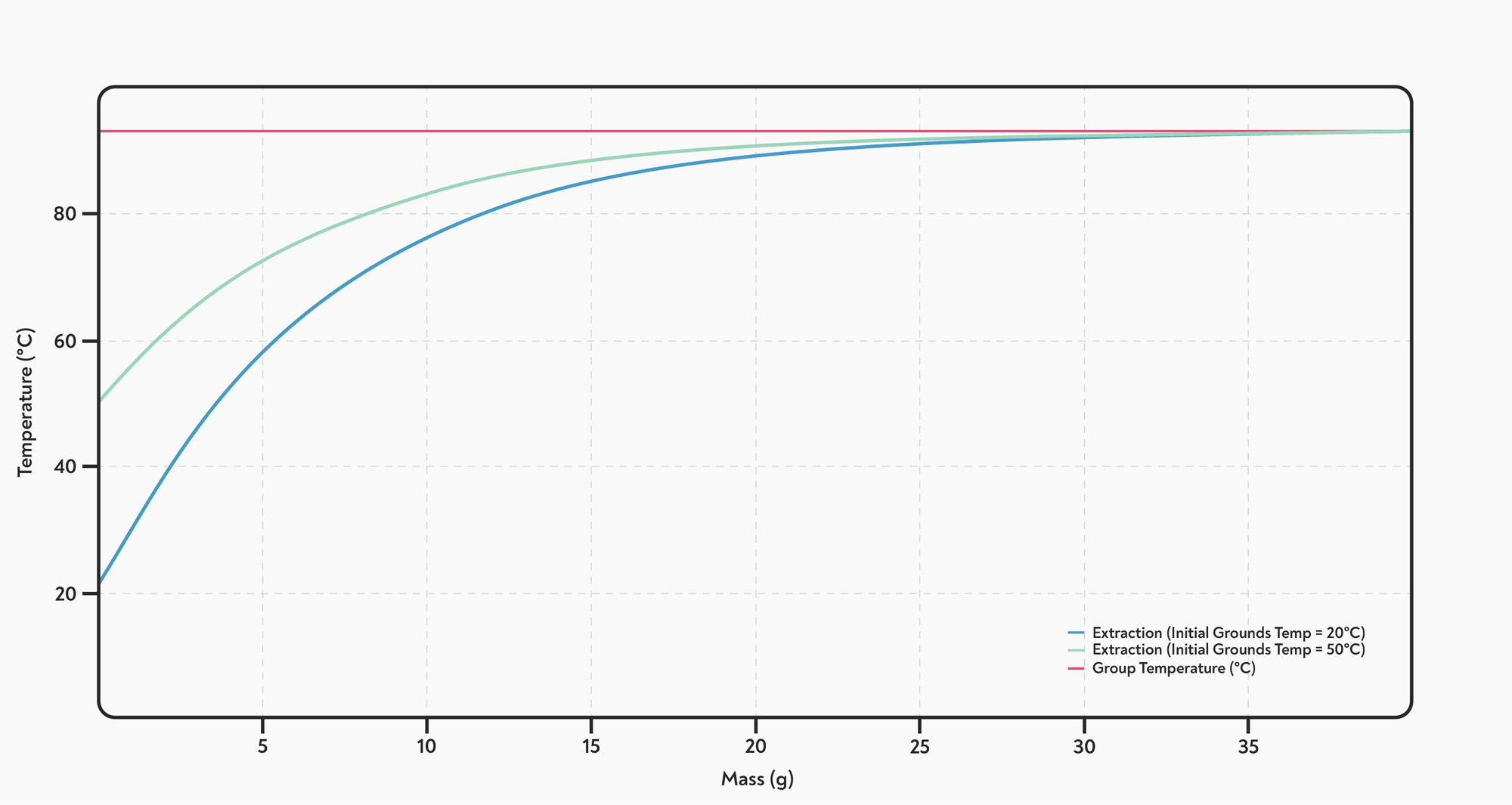
While modern espresso machine designs are able to precisely control the temperature of the water leaving the group, this sadly doesn’t guarantee that all extractions take place at the same temperature.
As soon as the water leaves the group, it begins losing heat, mainly to the coffee itself. Some heat will also be lost to the atmosphere and to the portafilter, which is why we recommend to leave portafilters in the group head in between shots to keep them hot.
Unfortunately, the amount of heat lost to the coffee is variable, which means the effective brewing temperature is also variable, no matter how tightly you control the temperature of the water leaving the group head.
Grounds temperature
Firstly, the amount of heat lost to the coffee will depend on the temperature of the grounds. Grinders generate a lot of heat during grinding, which means during busy periods the temperature inside the grinder can reach as high as 100°C (M Petracco, 2005). Our own measurements of heat in grinders found that the temperature of the coffee grounds could reach 75°C.
The potential importance of this can be easily shown by calculating the equilibrium temperature between the coffee and the water. In our blog post on temperature equilibrium in espresso, we showed that increasing the grounds temp from room temperature to 50°C could increase the equilibrium temperature by nearly 4 degrees — which could make the 0.1°C accuracy at the group head rather redundant.
Of course, simply calculating the equilibrium temperature is a major simplification — in reality, the brew water loses heat to the coffee progressively during the shot. A blogpost on DIYcoffeeguy.com models what happens to the temperature in the puck in more detail, showing how changing the grounds temperature might affect the brewing temperature throughout the shot.
 A model of the extraction temperature of an espresso during brewing. Data from: DIYCoffeeGuy.com
A model of the extraction temperature of an espresso during brewing. Data from: DIYCoffeeGuy.com
This model showed that while the extraction temperature in the latter part of the shot was fairly close to the group temperature,